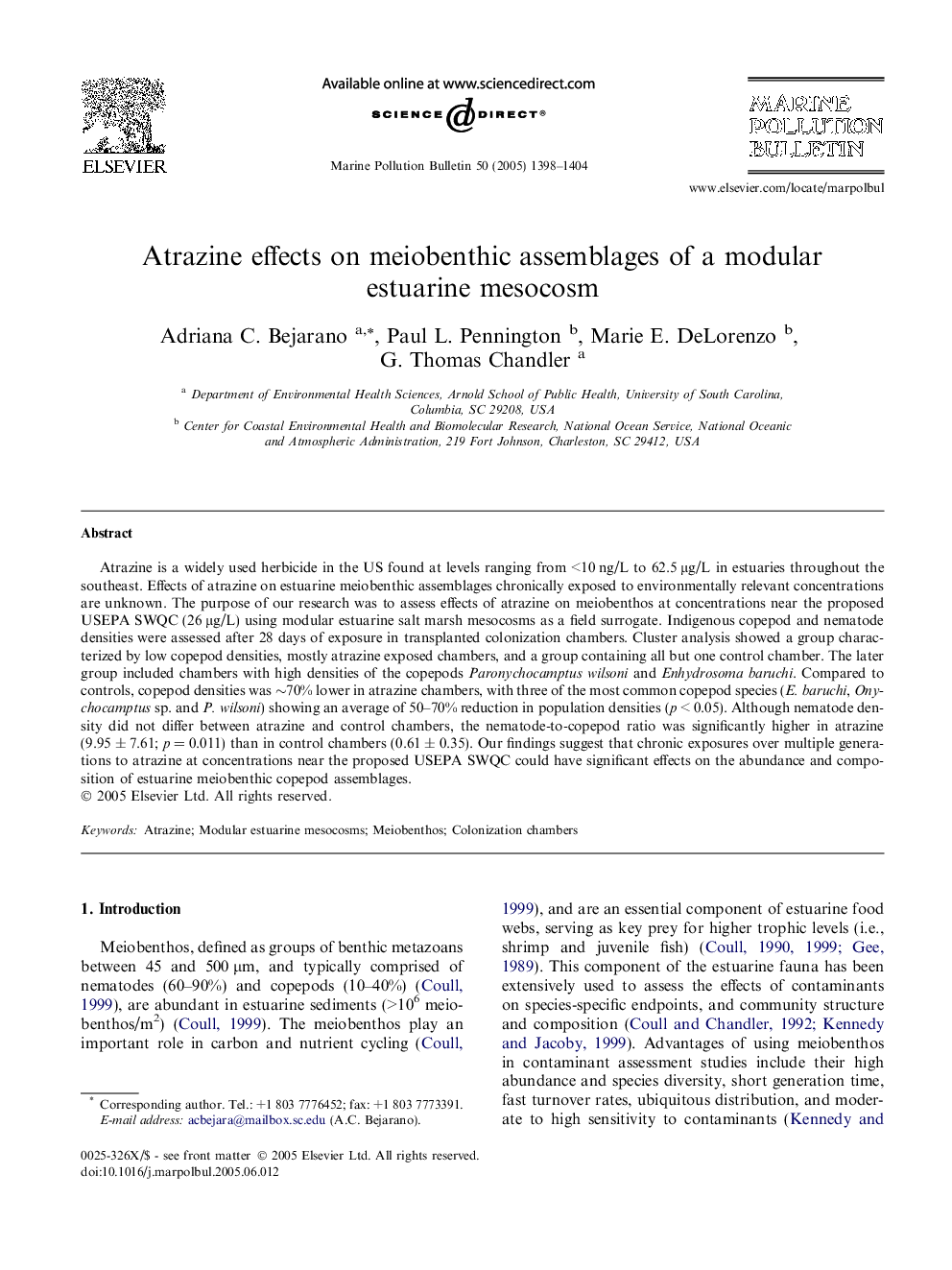| Article ID | Journal | Published Year | Pages | File Type |
|---|---|---|---|---|
| 9466011 | Marine Pollution Bulletin | 2005 | 7 Pages |
Abstract
Atrazine is a widely used herbicide in the US found at levels ranging from <10 ng/L to 62.5 μg/L in estuaries throughout the southeast. Effects of atrazine on estuarine meiobenthic assemblages chronically exposed to environmentally relevant concentrations are unknown. The purpose of our research was to assess effects of atrazine on meiobenthos at concentrations near the proposed USEPA SWQC (26 μg/L) using modular estuarine salt marsh mesocosms as a field surrogate. Indigenous copepod and nematode densities were assessed after 28 days of exposure in transplanted colonization chambers. Cluster analysis showed a group characterized by low copepod densities, mostly atrazine exposed chambers, and a group containing all but one control chamber. The later group included chambers with high densities of the copepods Paronychocamptus wilsoni and Enhydrosoma baruchi. Compared to controls, copepod densities was â¼70% lower in atrazine chambers, with three of the most common copepod species (E. baruchi, Onychocamptus sp. and P. wilsoni) showing an average of 50-70% reduction in population densities (p < 0.05). Although nematode density did not differ between atrazine and control chambers, the nematode-to-copepod ratio was significantly higher in atrazine (9.95 ± 7.61; p = 0.011) than in control chambers (0.61 ± 0.35). Our findings suggest that chronic exposures over multiple generations to atrazine at concentrations near the proposed USEPA SWQC could have significant effects on the abundance and composition of estuarine meiobenthic copepod assemblages.
Keywords
Related Topics
Physical Sciences and Engineering
Earth and Planetary Sciences
Oceanography
Authors
Adriana C. Bejarano, Paul L. Pennington, Marie E. DeLorenzo, G. Thomas Chandler,
